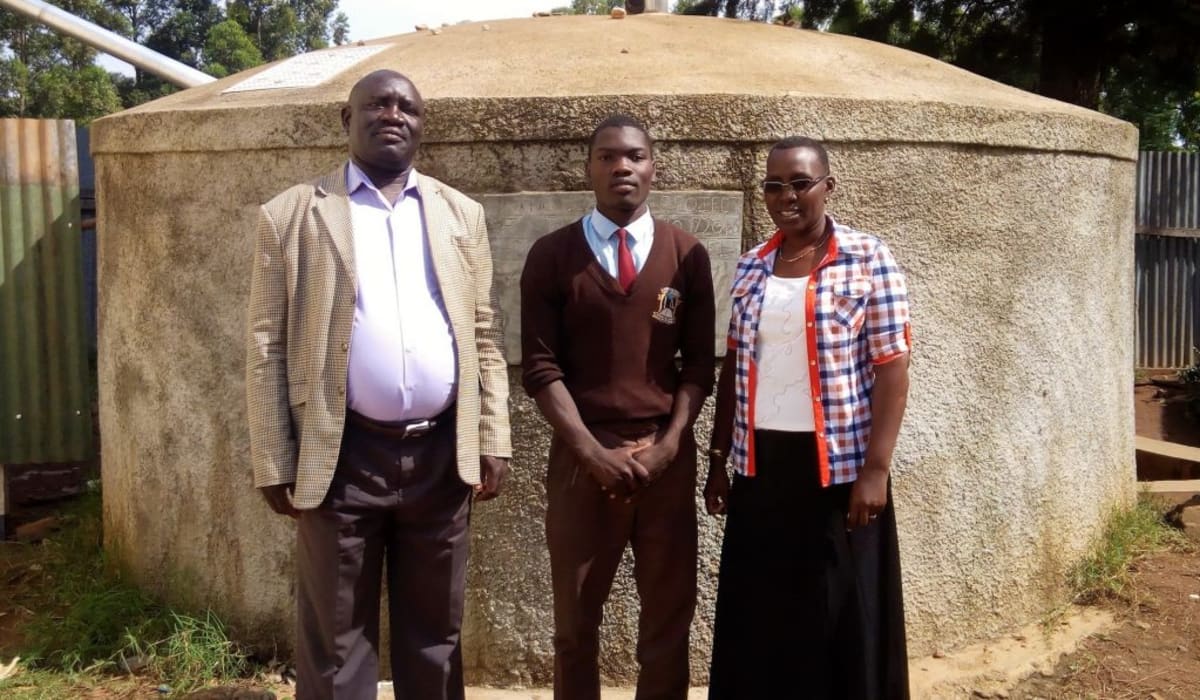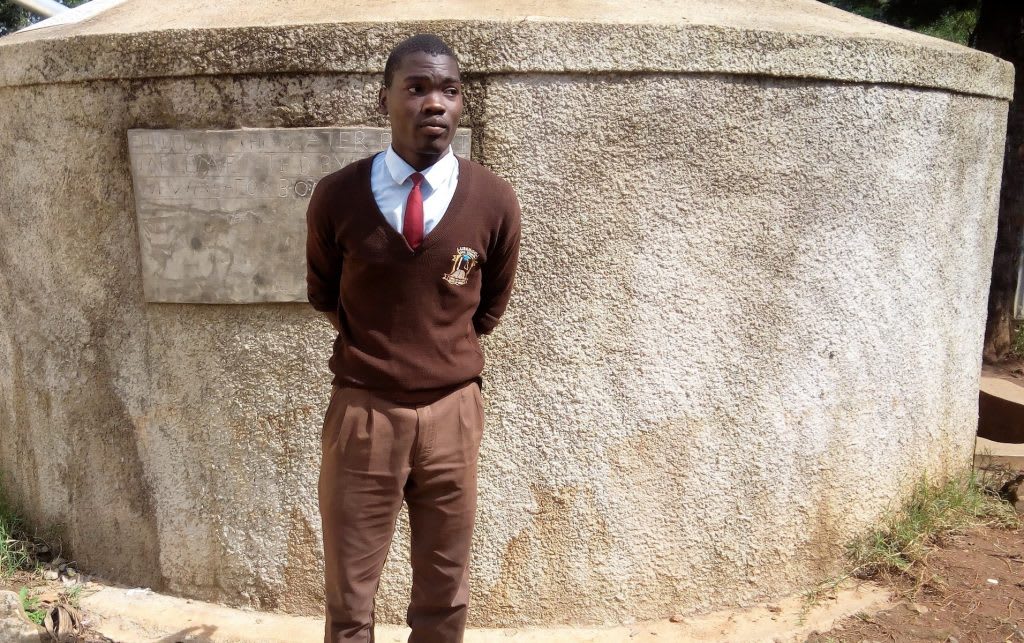This project is a part of our shared program with Western Water And Sanitation Forum (WEWASAFO). Our team is pleased to directly share the below report (edited for clarity, as needed).
Welcome to the School
Lusengeli Secondary School is a day school located in Lusengeli Village, Wodanga location, Sabatia Sub-County along Chavakali-Kapsabet Highway in Vihiga County. The school has a total population of 867 people comprised of 815 students, 36 teaching staff and 16 support staff. The student population is made up of 452 boys and 363 girls. (Editor’s Note: While this many people may have access on any given day, realistically a single water source can only support a population of 350-500 people. This school would be a good candidate for a second project in the future so adequate water is available. To learn more, click here.)
The institution is not only a giant academic performer among the neighboring schools, but also does well in co-curriculum activities such as the "student science congress," and the engineering fair. Participants in the engineering fair sometimes make it to the national level! Many of the students at Lusengeli are orphaned, their parents having died from HIV/AIDS. They now live with their grandparents, and are proof of perseverance through trial.
A normal day for a Lusengeli students starts at 7am and stretches to 5pm when class is dismissed.
The inhabitants of Lusengeli Community are primarily peasant farmers who grow maize and tea at a small scale. Lusengeli is special because it even has its own school farm to help provide for the school lunch feeding program.
One of the teachers at Lusengeli Secondary heard about WEWASAFO and decided to send in an application for a water and sanitation project. Upon receipt of this application, we sent out a team to conduct a survey on school conditions.
Water Situation
The school has one 10,000-liter tank that can hardly meet the needs of such a huge population. To illustrate this, we even found students fetching water from the tank's manhole since there were too many students waiting to use the tap. When the tank is emptied, the school has to spend money to chlorinate water from a nearby stream. Students are often sent there to fetch water used for cleaning the classrooms, which of course doesn't have to be chlorinated. It's best to save the tank's water for drinking only.
The school needs to have enough water of its own so students are no longer sent to the spring. Frequent trips to the spring waste valuable class and study time, and subject students to danger. Plus, the unprotected stream's water is contaminated and dangerous for consumption even after treatment.
Sanitation Situation
The school has a total of 22 latrine doors; eight for boys, nine for girls, and five serving the teaching staff. However, some of these latrines are too full to use. They are dirty, smelly, and many can't be locked from the inside. Considering these conditions, only 12 latrines can really be used. "One of the reoccurring challenges we’ve been having," said the deputy principal, "is the poor soil structure that latrines are built on. We hope that one day we will be able to construct pour flush modern latrines that are both long-lasting and save on space." Because of poor latrine conditions, open defecation seems to be an issue on school grounds. Students cannot wait in line or are deterred by the odor, and instead find a private place in the bushes or behind school buildings. The school has a neat, clean kitchen with a dish rack nearby. Nevertheless, the condition of the school compost pit was pathetic; it was unkempt, dirty and disorganized with trash everywhere! There are no hand-washing stations, so hands are not clean after using the latrines and before eating.
Plans: Hygiene and Sanitation Training and Hand-Washing Stations
Training will be held for two days. The facilitator will use PHAST (participatory hygiene and sanitation transformation), ABCD (asset-based community development), CTC (child to child), lectures, group discussions, and handouts to teach health topics and ways to promote good practices within the school. The CTC method will prepare students to lead other students into healthy habits, as well as kickstart a CTC club for the school. This CTC club will oversee the new facilities, such as hand-washing stations, and make sure they are kept clean and in working condition. The two hand-washing stations will be delivered to the school, and the club will fill them with water on a daily basis and make sure there is always a cleaning agent such as soap or ash.
Plans: VIP Latrines
Two triple-door latrines will be constructed with local materials that the school will help gather. Normally, we designate three doors for each gender. Lusengeli needs all six doors to serve the boys, though, since the boys' latrines recently collapsed due to soft, shifting soil.
Plans: Rainwater Catchment Tank
A 30,000-liter rainwater catchment tank will help alleviate the water crisis at this school. The school will also help gather the needed materials such as sand, rocks, and water from the spring for mixing cement. Once finished, this tank can begin catching rainfall that will be used by the school's students and staff only. Students will no longer have to leave their school in search of water!

 Rainwater Catchment
Rainwater Catchment
 Rehabilitation Project
Rehabilitation Project























